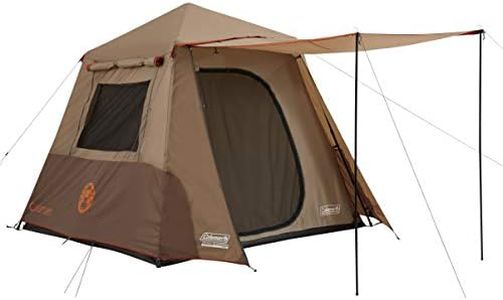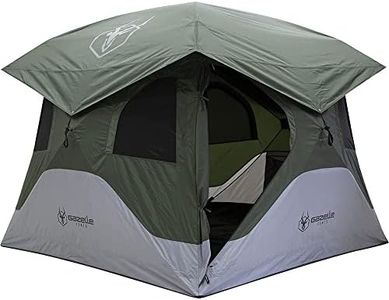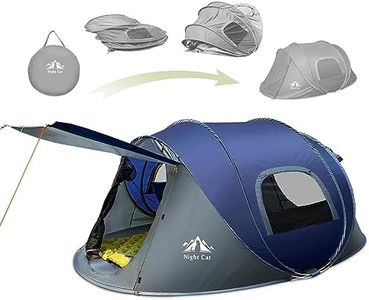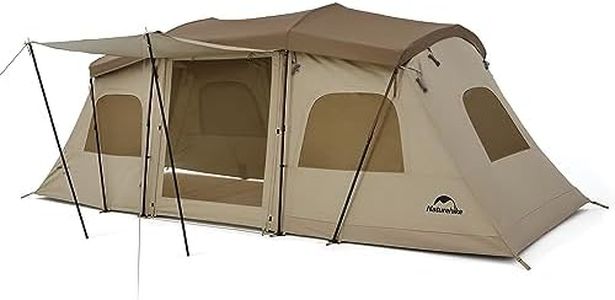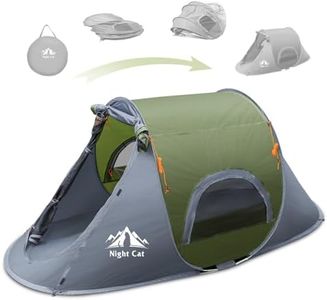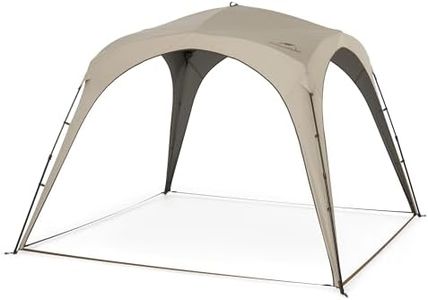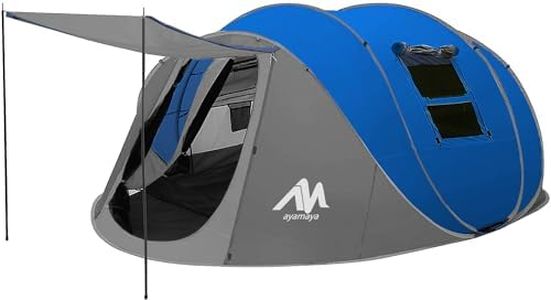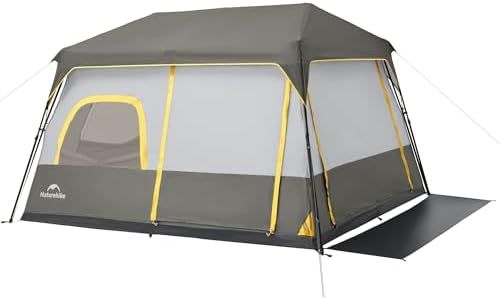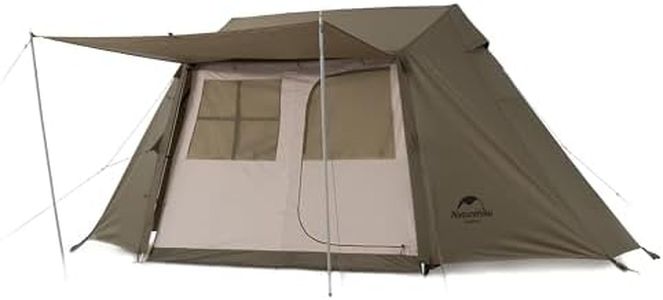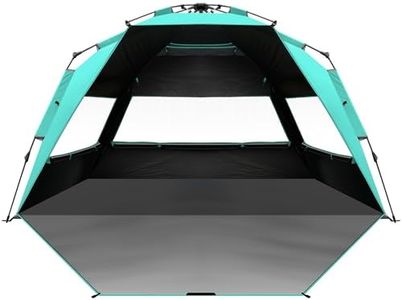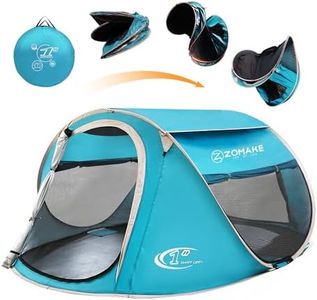We Use CookiesWe use cookies to enhance the security, performance,
functionality and for analytical and promotional activities. By continuing to browse this site you
are agreeing to our privacy policy
10 Best Pop Up Tents
From leading brands and best sellers available on the web.Buying Guide for the Best Pop Up Tents
Choosing the right pop-up tent is all about finding something that matches how and where you plan to use it. Pop-up tents are designed for convenience and quick setup, so they’re great for campers who want to avoid complicated assembly. When comparing tents, look beyond just the ease of popping it open—consider the size, material, ventilation, waterproofing, and how small it packs down for transport. Think carefully about how many people you'll shelter, your typical outdoor conditions, and how much gear you usually bring along.CapacityCapacity tells you how many people the tent is designed to sleep, usually shown as numbers like 2-person, 4-person, or 6-person. This spec is important because a tent that's too small can lead to uncomfortable nights, while one that's too big may be heavier and harder to manage. If you just need a tent for yourself, a 1- or 2-person model keeps things light and easy. For couples or friends, 2- to 3-person tents work well. Families or groups will want 4-person or larger. Think about whether you want extra space for gear or a dog and consider sizing up if so.
Setup and Take Down TimeThe main appeal of pop-up tents is how quickly they go up and come down. This spec matters if you dislike wrestling with tent poles or want to save time at the campsite. Some tents literally pop open in seconds, while others might need a minute or two. For people who value simplicity or want a tent for festivals or short trips, faster setups are ideal, while those on extended camping trips might not mind an extra minute for more features.
Weight and Packed SizeWeight and packed size determine how easy the tent is to carry and store. If you're hiking or have to walk a distance from the car, a lighter, more compact tent makes a big difference. Pop-up tents tend to be bulkier than standard tents when packed because of their spring frames. For car campers, a bigger packed size may be fine, but if you're using public transport or hiking, a more portable design is better. Know how you'll carry the tent and choose one that matches your needs for portability.
Weather Resistance (Waterproofing and Wind Protection)Weather resistance ensures you stay dry and comfortable. Look for details like waterproof coatings (often rated in millimeters) and double-layer designs. This matters for anyone camping where rain is possible. Light use in dry weather needs only basic protection, while frequent campers or those expecting heavy rain should look for higher waterproof ratings and more robust structures. If you're camping in windy places, check for strong frames and secure anchor points. Think about your typical weather conditions and pick a tent suited to those.
VentilationVentilation keeps the inside of your tent from getting stuffy, which is important for sleeping comfort. Most pop-up tents have mesh windows or vents to let air in but keep bugs out. If you’ll be camping in warm or humid places, good airflow is key. More openings and larger mesh panels mean better ventilation, but can also mean less warmth in cold climates. Match the amount of ventilation to the conditions you expect—choose more for summer, and less (or with closeable panels) for cooler camping.
Durability and MaterialDurability comes down to the fabric and frame materials. Thicker fabrics and stronger frames last longer but might be heavier. If you camp a few times a year or just at festivals, moderate durability will be enough. For frequent campers or rough environments, pick stronger materials and reinforced seams for longer life. Consider how often and where you’ll use the tent; go for tougher builds if you expect rough use.
